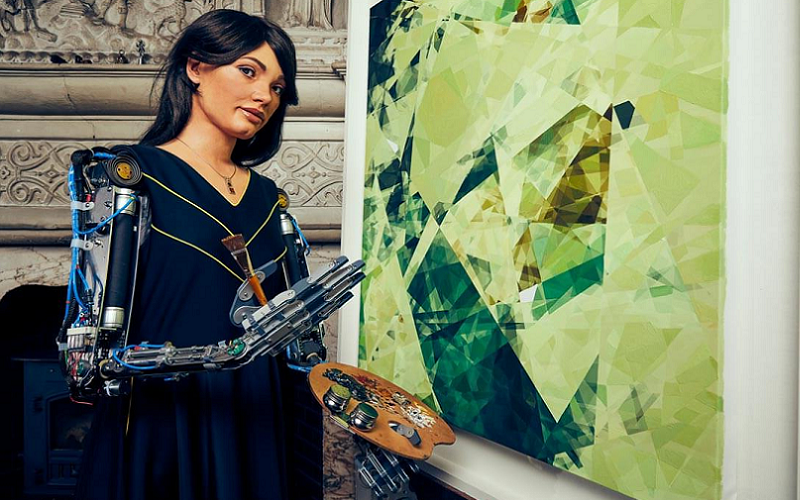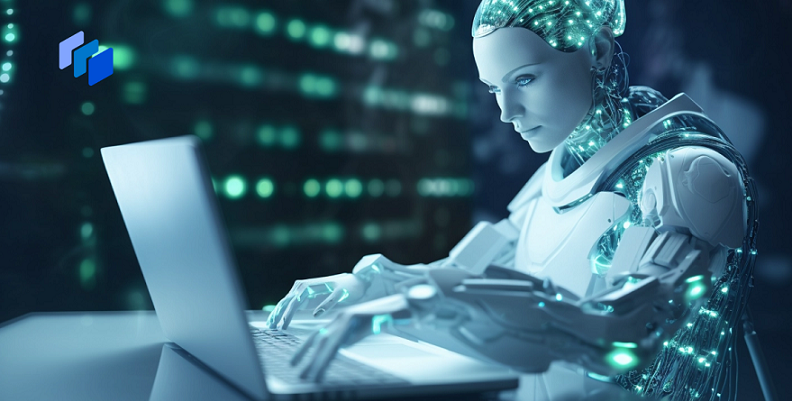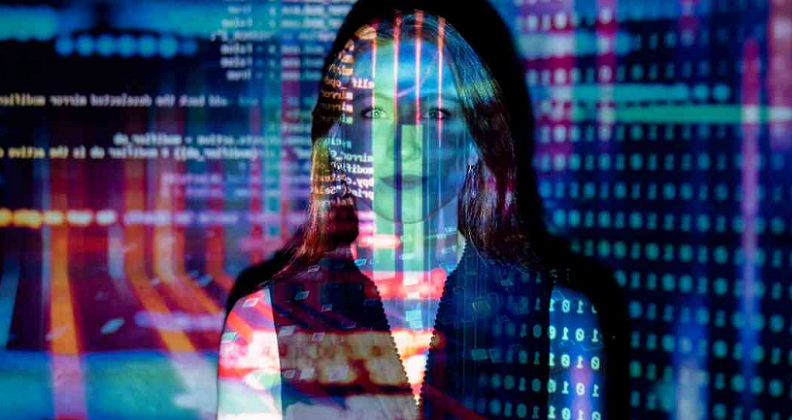
In recent years, the fusion of technology and creativity has ushered in a new era in the art world, marked prominently by the integration of Artificial Intelligence (AI). This groundbreaking intersection is not just reshaping how art is created, but also challenging our very perceptions of creativity and artistic expression. The emergence of AI in art is a testament to how machines are not only tools of human creativity but are becoming creative entities in their own right.
Introduction to Artificial Intelligence (AI) and Art
The realm of art, known for its boundless creativity and human touch, is experiencing a revolutionary transformation with the advent of Artificial Intelligence (AI). This confluence of art and technology is not just a fleeting trend but a significant shift in the landscape of creative expression. As AI continues to evolve, it is becoming increasingly evident that these machines, once thought to be mere tools, are now stepping into the realm of creators themselves.
Definition of Artificial Intelligence (AI)
Before getting into the intricacies of AI’s role in art, it is crucial to understand what AI truly entails. Artificial Intelligence, in its broadest sense, refers to the simulation of human intelligence in machines. These machines are programmed to think like humans and mimic their actions, whether that’s learning, problem-solving, or even creating. AI spans a range of technologies, from simple algorithms to complex neural networks, all of which are playing an increasingly significant role in various fields, including art.
Overview of AI’s Role in Art
The impact of AI on art is multifaceted. It ranges from machines generating their own artworks to assisting human artists in creating new forms of expression. AI’s involvement in art challenges traditional notions of creativity, blurring the lines between human and machine-made art. This section will explore how AI is being used in the art world, the nature of the collaboration between AI and human artists, and the profound implications this partnership has for the future of art.
Historical Context of Artificial Intelligence (AI) and Art
The integration of Artificial Intelligence in art is not a phenomenon that sprang up overnight. It has a rich historical backdrop that spans several decades, revealing a gradual yet significant evolution of technology’s role in the artistic sphere. Understanding this history is vital to appreciating the current state of AI in art and anticipating its future trajectory.
Early Experiments in AI and Art
The journey of AI in art began as early as the mid-20th century. Pioneers in computer science and art, such as Herbert A. Simon and Ivan Sutherland, started experimenting with the concept of machines performing creative tasks. These initial explorations were rudimentary, often focusing on simple pattern generation or basic graphical representations. However, they laid the groundwork for the future, showcasing the potential of computers in artistic creation and setting the stage for more sophisticated AI applications in art [1].
Evolution of AI Technologies in the Artistic Realm
As technology advanced, so did the capabilities of AI in art. The late 20th and early 21st centuries witnessed a surge in the development of AI technologies that could learn, adapt, and create with increasing complexity. This period saw the introduction of neural networks and machine learning algorithms, which allowed for more nuanced and sophisticated artistic outputs.
Artists and technologists began to collaborate more extensively, exploring how AI could be used not just as a tool for creating art but as a collaborative partner in the creative process. The evolution of AI technologies brought about a significant shift in how art was produced and perceived, marking a new era in the convergence of art and technology.

AI-Driven Artistic Methods
The application of Artificial Intelligence in art is not just about the end product, but also about the innovative methods and processes that AI brings to the artistic table. These methods have opened up new avenues for creativity, allowing artists to explore uncharted territories in their artistic expression.
Generative Adversarial Networks (GANs) and Their Function
Generative Adversarial Networks, commonly known as GANs, represent a significant breakthrough in AI-driven art. GANs are a class of machine learning frameworks where two neural networks contest with each other in a game. In the context of art, one network generates images, while the other evaluates them. This process continues until the generated artwork reaches a high level of realism or artistic value. GANs have been instrumental in creating highly sophisticated and nuanced art pieces, which often blur the line between human-made and machine-generated artworks [2].
Machine Learning Algorithms in Creating Art
Beyond GANs, other machine learning algorithms also play a pivotal role in AI-driven art. These algorithms can analyze vast amounts of data, learn from existing art styles, and even incorporate elements of randomness to create unique artworks. They can replicate traditional techniques, like painting and drawing, or create entirely new forms of visual expressions. These algorithms are not just tools in the hands of artists but collaborators that bring their own ‘creativity’ to the process.
Examples of AI Art Tools and Software
The practical application of AI in art is made possible through various tools and software, each offering unique features and capabilities. Some notable examples include DeepArt, which transforms photographs into artworks resembling the styles of famous painters, and Google’s DeepDream, which creates surreal, dream-like images. These tools democratize the process of artistic creation, making it accessible to not only seasoned artists but also to enthusiasts and novices alike, thereby expanding the boundaries of who can create art and how it can be created.

AI as an Art Collaborator
The role of Artificial Intelligence in art extends beyond being just a tool for creation; it has evolved into a collaborator, offering new perspectives and possibilities in the creative process.
Case Studies of Artists Collaborating with AI
Numerous artists across the globe have embraced AI as a collaborative partner in their creative endeavors. For instance, artist Refik Anadol uses AI to create immersive, large-scale installations that blend art with data and architecture. Similarly, artist Sougwen Chung collaborates with robotic arms that learn and mimic her drawing style, creating a symbiotic relationship between human and machine. These case studies showcase how AI can augment human creativity, bringing about a new form of artistic expression that is a blend of human intuition and machine intelligence [3].
The Creative Process in AI-Assisted Art
The integration of AI in art has transformed the creative process in several ways. Artists can now experiment with algorithms that can generate endless variations and possibilities, pushing the boundaries of their traditional artistic practices. AI can assist in the ideation process, offer new forms of inspiration, and execute complex tasks, allowing artists to focus on the conceptual aspects of their work. This collaboration with AI leads to a unique fusion of human and machine creativity, producing artworks that might not have been possible by human hands alone.
Ethical Considerations and Authorship
The use of AI in art raises important questions about authorship and ethical considerations. When an artwork is created with the significant involvement of AI, who is the true creator – the artist, the machine, or both? This dilemma extends to the rights and ownership of AI-generated art.
Furthermore, there are ethical considerations regarding the use of data and the potential for AI to replicate existing artistic styles, potentially infringing upon the originality and intellectual property of other artists. Navigating these ethical waters is a critical aspect of the collaboration between artists and AI.
The Impact of AI on the Art World
The incursion of Artificial Intelligence into the domain of art is not just a technological advancement but a cultural shift that is redefining the boundaries and perceptions of art. AI’s influence in the art world is profound, affecting everything from artistic creation to market dynamics.
Changing Perceptions of Art and Creativity
AI has challenged traditional notions of what constitutes art and who can be considered an artist. The ability of machines to create art that resonates emotionally with human audiences has sparked debates on creativity’s nature. Is creativity a uniquely human trait, or can machines possess it too? AI-generated art is also altering perceptions of the artistic process, no longer seen as solely the purview of human imagination and skill but as a collaborative effort between human and machine intelligence [4].
AI’s Influence on Artistic Styles and Movements
The introduction of AI in art has given rise to new styles and movements. AI’s ability to analyze vast datasets of historical art has led to the creation of works that can mimic classical styles with astonishing accuracy or blend different genres to create entirely new aesthetics. These developments are not only expanding the artistic lexicon but are also influencing contemporary artists, encouraging them to incorporate AI into their work in novel and innovative ways.
The Economic and Commercial Implications
The rise of AI in art has significant implications for the art market and economy. AI-generated artworks are beginning to find their place in galleries and auctions, sometimes fetching high prices. This trend raises questions about the valuation of art: What determines the worth of an AI-generated piece?
Moreover, AI is democratizing art production, enabling a broader range of people to create and sell art, potentially reshaping the commercial art landscape. However, it also poses challenges in terms of copyright and ownership, aspects that the art world is still grappling with.
References
[1] If it wasn’t created by a human artist, is it still art?
[2] Artificial Intelligence and the Arts: Toward Computational Creativity
[3] If art is how we express our humanity, where does AI fit in?
[4] Art in the age of artificial intelligence
